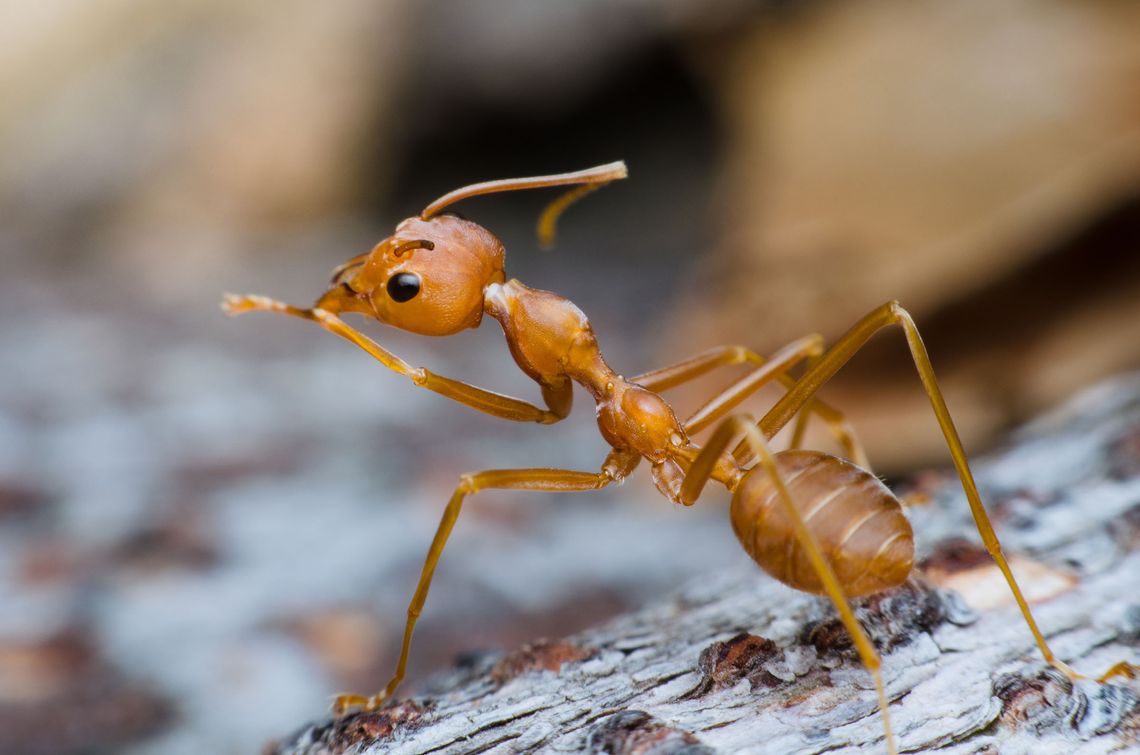Fire ants are the most common insect pests of home lawns. They occur in nearly every lawn in Mississippi. Even if you can achieve a totally fire ant free yard, it probably won’t stay that way for long, because newly mated fire ant queens will quickly recolonize it. New colonies seem to thrive in areas that are free of other competing colonies. Fire ant control can be an on going battle, but there are steps you can take to keep your yard relatively free of fire ants.
1) Granular Baits: The easiest, cheapest, and most effective way to control fire ants is to use baits. Learn to use baits properly and preventively and the number of fire ants in your yard can be reduced by 80 to 90 percent. The key to success with baits is applying them as broadcast treatments instead of treating only individual mounds. When properly applied, granular fire ant baits are low cost, quick and easy to apply, they are safe to children and pets, and give up to 80% control. Baits are “fire ant-edible” granules that contain low doses of slow acting insecticides or insect growth disruptors.
It may take two to six weeks to see the full benefits of a bait. Early spring is the best time to apply fire ant baits because fire ants are actively foraging for food at this time of year. If you are just going to treat one time of year, do it in the spring. But you can improve control by treating in midsummer and a third time in the fall. A rule of thumb is to broadcast a granular bait over your yard three to four times a year; around Easter, around Independence Day, and around Labor Day, and you should not have very many fire ants in your yard.
2) Dry Mound Treatments: Can’t wait a few weeks for a bait to control that big mound by the edge of the patio? A dry mound treatment is the most convenient way to kill fire ant mounds. Keep a can of dry mound treatments on hand to spot treat the mound you see in your yard. As you find fire ant mounds, just sprinkle the labeled amount of the product on the mound and walk away. The use of a combination of granular baits and dry mound treatments are very effective in controlling fire ants.
3) Liquid Mound Drenches: This is the fastest way to kill individual fire ant mounds, but they are the most time consuming to mix and apply. Use a watering can to mix and apply liquid drenches. Just mix the specific amount of insecticide in water and pour over the mound. The key to success with liquid drenches is to use enough liquid to thoroughly soak the mound. Depending on the size of the mound, it could range from 1 to 2 gallons of mixed drench.
Begin by applying about ¼ of the total volume to a 10-12 inch band around the outside of the mound. This will help prevent the queen from escaping through those underground foraging tunnels and improves control of workers. Then apply the rest of the drench directly to the mound. Failing to use enough drench to thoroughly soak the mound is the main reason for problems or failure with mound drenching fire ants.
4) Broadcast Insecticide Treatments: Broadcast insecticide treatments are contact insecticides that are applied over the entire lawn. These are generally more time consuming and more costly than baits. These are used more in highly managed areas such as athletic fields and golf courses, than home lawns. Broadcast insecticide treatments may be formulated as liquids, which are mixed according to label instructions and then sprayed over the lawn areas, or as granular treatments, which are spread over the lawn areas using an appropriate spreader.
Don’t get granular insecticides and granular baits confused. Baits are impregnated with oil or some other food substance and a small amount of slow-acting insecticide. Worker ants actively collect the bait granules and carry them back to the colony. Granular insecticides are simply granules that are impregnated with insecticide. These are not attractive to ants. Instead, the insecticide in the granules moves into the soil and controls foraging ants and newly settled queens by contact activity. Obtaining uniform coverage is more important when applying broadcast insecticide granules than when applying granular baits.
One benefit of applying insecticides used as broadcasts treatments for fire ants is the insecticides also control other lawn pests, such as chinch bugs, white grubs, and mole crickets. Choose the right insecticide and you can control mole crickets, fire ants, and white grubs. Before purchasing a broadcast insecticide, read the label carefully to be sure that the insecticide you choose controls the particular group of pests you need to control.
Source, “Control Fire Ants in Your Yard”. Extension Publication 2429


Comment
Comments